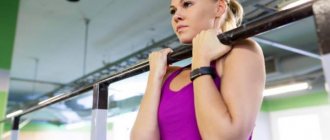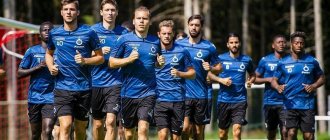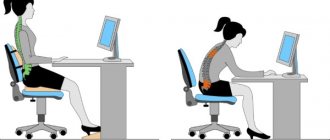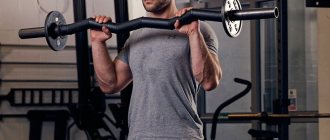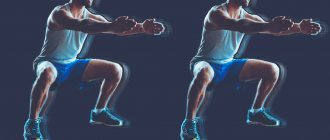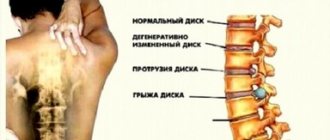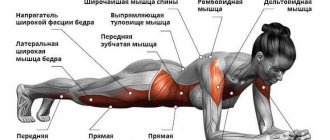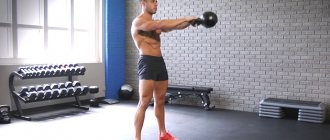When we decide to go in for sports in order to strengthen the body, lose weight, and become more beautiful, we choose a specific direction. This could be running, cycling, swimming, fitness and much more. All our attention and motivation are concentrated on highly targeted training. The logic of most beginners is this: to run better, you need to run more!
A fragile body is injured, muscles quickly weaken, and the effectiveness of training decreases. To avoid such consequences, you must include a runner’s physical fitness in your training schedule 2-3 times a week.
GPP (general physical training) is a special set of exercises that allows you to develop all the physical qualities of an athlete. During such exercises, the maximum number of muscles and ligaments are used, and the functioning of the cardiovascular + respiratory systems improves.
The importance of physical fitness for runners
What specific physical qualities can track and field athletes expect to develop from general physical fitness exercises?
- The strength potential of the muscles increases. Why does a runner need this? Muscle strength is directly related to endurance. During a long workout, even with the correct running technique, after some time the muscles stop coping with the load. Result: the athlete begins to slouch, the foot turns in, the arms “dangle”, the shoulders tighten. All technique is disrupted, the load on internal organs and joints increases, and the movements of the diaphragm become difficult. Therefore, general physical fitness protects against injury, allowing you to run longer with the correct technique;
- General physical training for runners develops stretching. A good ligamentous-muscular frame strengthens the joints - this is an important element of long running. The longer an athlete runs, the greater the risk of injury to the knee and ankle joints. Strong ligaments prevent bones from hitting each other and protect the periosteum from inflammation;
- The speed is growing. Strength loads are an excellent preparation for speed training, so it is important to mix them together. We recommend performing general physical training on rest days or light jogging before intense exercise (1-2 days before).
- Weight loss. If you decide to go jogging to lose weight, it is very important for you to lose weight in other ways: a balanced diet, strength training. The basic principle of running is to push off the ground and land on your knuckles with your full body weight. The lower the mass, the lower the load on the knees and ankles. General physical fitness will help you burn extra calories faster.
- General physical training for runners is an opportunity to build muscle mass. Since jogging in itself does not increase muscle definition. With overtraining or poor nutrition, muscles, on the contrary, can become smaller.
Do you want to have a beautiful, toned body? Don't forget to do a set of general physical fitness exercises.
Running on straight legs
The legs work like scissors. It is important that they are kept level and that the landing occurs on the forefoot. Here, unlike previous SBUs, it is important to move forward quickly. To make it more comfortable, the body moves slightly back. Considering that the goal is to move forward, the hands work actively. Typical mistakes: bending the legs, low speed, landing on the heel.
General physical fitness exercises for runners
Many people think that general physical training is a warm-up before running. But there is a cardinal difference! During the warm-up, the body should warm up and prepare for activity. Therefore, only the dynamic part of the load + SBU (special running exercises) is performed.
General physical fitness exercises for runners involve dynamic + static loads, strengthen the body as a whole, and help build muscles.
Conventionally, all exercises are divided into three groups: lower, upper and middle (core).
Bike
This is not the kind of cycling that is done lying down and trains the abdominal muscles. This is a run in which the legs move as if they were pedaling a bicycle. At the same time, progress occurs. Pushing off with your supporting leg, you need to bring the thigh of the second leg forward and make a “raking” movement down and back with it. This very “raking” movement should be very fast. The hands help very actively, since there is a need for a good jump. Typical mistakes: small amplitude of the legs, passivity of the arms.
Lower torso
Since the legs are the main engines of running, we will devote most of the training to them. We will perform exercises on the muscles of the pelvic girdle, thigh, lower leg, and foot.
Squats
Place your feet shoulder-width apart. Toes are parallel to each other, pointing forward. Lower yourself down until your thighs and shins form a 90-degree angle. Your knees should not move forward from your toes. It is important to keep your back straight. Perform 10-15 squats in total.
Trained: quadriceps, hamstrings, gluteal muscles.
High chair
A runner's general physical fitness also includes static load. A chair is a static squat. Lock the position for 30-60 seconds.
Download training plans to prepare for the marathon and half marathon.
Start preparing right now!
Trained: quadriceps, buttocks.
Bulgarian squats
Place a bench or chair behind you. Place your left foot on it with your toe. Step forward with your right. Squat so that both legs form a 90-degree angle. 10-15 times on each leg.
Trained: quadriceps, buttocks, hamstrings, stabilizers.
Lunges
Back straight, hands on waist. Step forward with your right foot and squat down so that both legs form a 90-degree angle. Moreover, the left leg should not touch the floor with its knee. Then return to the starting position and change legs. Performed 10-15 times. Then you can lunge backwards the same number of times. The support is always on the front leg.
Trained: quadriceps, stabilizer muscles.
Balance on one leg + squat
Hands on the belt, back straight. The left leg bends at the knee 90 degrees and rises forward. This position is held for 30-60 seconds. Then a half squat is performed on the right leg. The legs are changing. In total, this general physical training exercise for runners is performed 8-10 times.
They train: quadriceps, gluteal muscles, hamstrings, calf group and even abs!
Gluteal bridge
Lying on your back with your knees bent, lift your buttocks and thighs. Hands along the body. Try to keep your body in a straight line. Hold the bridge for 30 seconds. Repeat 8-10 times.
Do the same exercise on one leg. For example, bend your right leg at the knee, lift your left leg up, then stand on a straight bridge.
Trained: gluteal muscles, hamstrings, lower back.
Jumping Lunges
General physical training for runners involves combining different exercises to engage the maximum number of muscles. Do regular lunges, not returning to the starting position, but changing legs while jumping. This type of load will be especially effective for sprinters.
Trained: calf muscles, quadriceps, hamstrings, buttocks, abs, stabilizer muscles.
Strengthening the calf muscles
It is extremely important for a runner to have strong shins. Here are some simple exercises to strengthen the calf group:
- Stand on a pedestal with your heels hanging slightly outside the pedestal. Rise up on the hoop and hold this body position for several seconds;
- Another option for a runner’s general physical training for the calf muscles: stand on a stand, bend your knees at an angle of 45 degrees. Leave one leg suspended in the air. With your other leg, perform half squats on your toes.
Exercise “Bird Dog”
Get on all fours so that your hands are at shoulder level. Then straighten the opposite arms + legs, and then bring them closer together. Change the order.
Trained: gluteal muscles, hamstrings, abs.
Ankle + foot strengthening
- Walking on the outer and inner sides of the foot;
- Trampling on toes - rear/sole/rear/sole;
- Circular movements in the ankle joints.
Running with shin sprains
Many people remember this exercise from physical education lessons. The idea is simple - you need to touch your heels to your buttocks with maximum step frequency and minimal forward movement. The hands can move or be clasped behind the back. Typical mistakes: placing the leg on the entire foot, fast advancement (the task is to do as many sweeps as possible, and not to run the distance faster), tightness of the arms (do not press them too hard to the body), holding the breath and small amplitude (it is better to do fewer repetitions, but correct).
Upper body
Prepared muscles of the shoulder girdle, neck, and arms help coordinate movements, maintain balance, and maintain correct posture. Therefore, it is important to perform the following general physical training exercises for runners.
Push ups
Get into a plank position. Elbows point back, body forms a straight line. Bring your body closer to the floor, bending your arms at the elbow joints. Girls can take a kneeling position (light version).
Trained: deltoid, biceps, triceps, pectoral muscles, abs.
Triceps push-ups
Sit on a chair/bench. Place your hands behind you, then lift your buttocks off the chair and move forward. Legs are extended, resting on the floor. Begin lowering yourself until your shoulders are parallel to the seat of the chair (elbows forming a 90-degree angle).
Almost the same muscles are trained
Other exercises:
- Pull-ups with direct + reverse grip;
- Lifting dumbbells through the sides + in front;
- Dynamic plank: lowering onto the forearm + raising to outstretched arms.
These general physical training exercises for runners are great for preparing your arms.
Deer running
This exercise is a kind of synthesis of running and jumping. It is difficult for beginners, but you still need to master it. To make it easier to monitor your footwork, imagine an obstacle in front of you, such as a log. You need to jump over it with one leg, bending it at the knee. The second leg remains motionless. Hands actively help the body move. Typical mistakes: placing the foot on the entire foot, stiffness of the arms, gaze directed downward, too fast movement, as a result of which jumping turns into simple running.
Core (back + abs)
Plank
“Favorite” general physical training exercise for runners and other athletes.
The body rests on the toes + forearms, which are parallel to each other. Shoulders, pelvis, calves form one line. This static position is maintained from 30 seconds to 3 minutes (depending on preparation).
Trained: oblique + rectus abdominis muscles, back muscles, buttocks, calves, quadriceps.
Crunches
In a sitting position, bend your knees and clasp your hands in front of your body. Only the upper body moves - turn right/left. To make it more difficult, you can lift your feet off the floor and pick up dumbbells.
Trained: back muscles, abs, shoulder girdle.
Bike
In a lying position, with your arms under your head, lift your legs alternately so that your thigh is perpendicular to the floor. Bring your opposite elbow closer to your knee.
Trained: abdominal muscles, quadriceps, pelvic girdle muscles.
boat
An excellent general physical training exercise for long-distance runners.
The athlete is in a prone position. Hands go up. The chest and hips are lifted off the floor, the stomach and pelvis are pressed tightly against the surface. The static position is held for 30 seconds for several approaches.
Trained: muscles of the back, pelvic and shoulder girdle.
Pendulum
Lie on your back with your arms outstretched (your body forms a T). With your two legs brought together, you try to reach your left/right palms alternately. Shoulders do not come off the floor. Just 10-15 repetitions.
Trained: abdominal muscles, buttocks and other muscles of the pelvic girdle, quadriceps.
Burpee
This general physical fitness exercise for runners develops all the muscles of the body at once. It can be an alternative to several separate exercises to save time.
From a sitting position with emphasis on your hands, jump into a plank position. Then touch your chest to the ground, keeping your body straight. Return to a sitting position, then jump up, raising your arms. Repeat the exercise 10-15 times.
Trained: pectoral, deltoid muscles, triceps, back muscles, abs, quadriceps, gluteal, calf muscles.
Running with hip raise
There is no hurry here either. Pushing off with your supporting leg, you need to raise the hip of the fly leg as high as possible. As with the first exercise, it is important to maintain a high frequency of leg lifts. During movement, your shoulders should be relaxed and your arms should be bent at the elbows. The supporting leg and torso should create one line. It is important that your back is straight at all times. Beginners can work with their hands, while experienced athletes tend to isolate their hands behind their back. Common mistakes: placing the foot on the entire foot (only the toes work), excessive squatting, stiffness of the hands.
